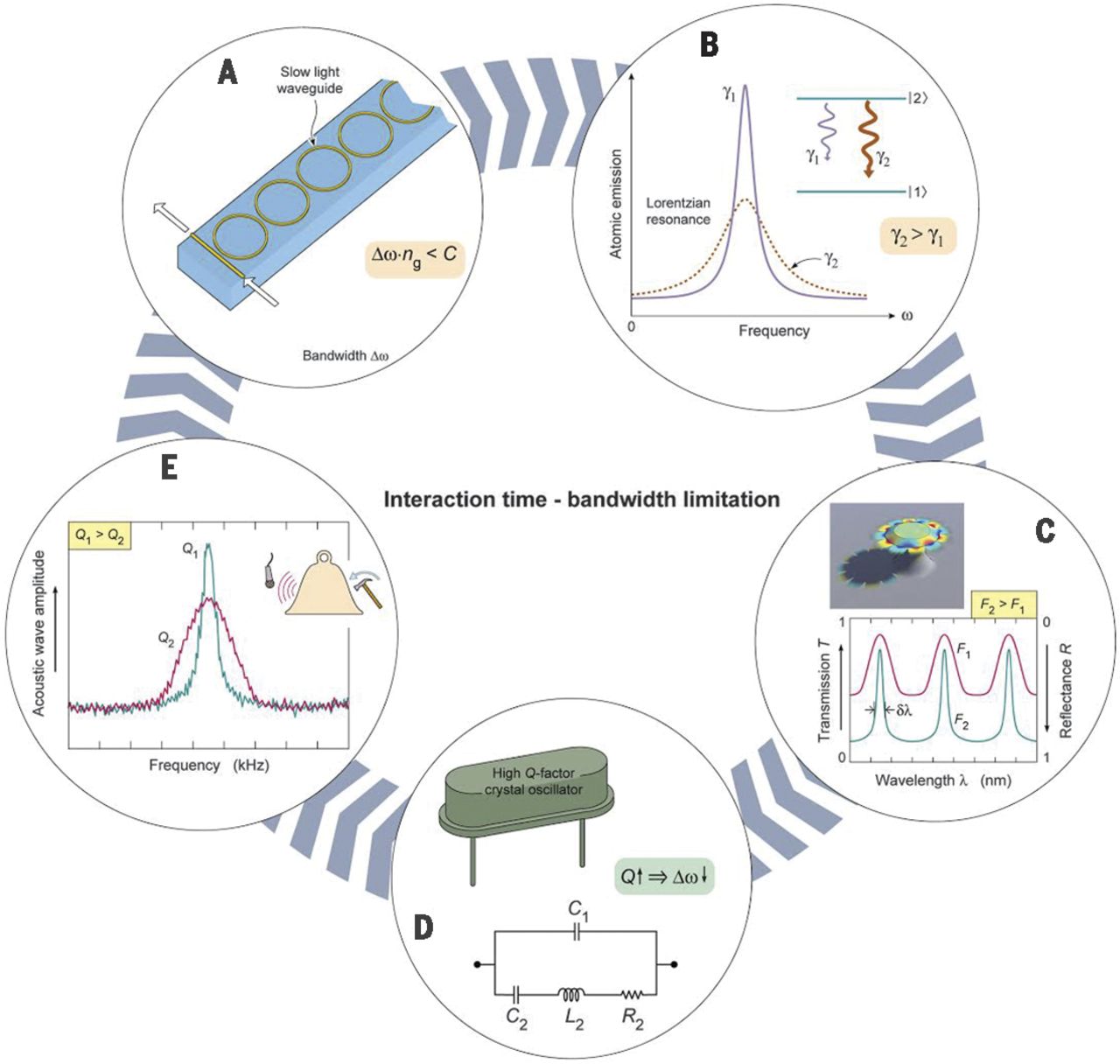
A century-old tenet in physics and engineering asserts that any type of system, having bandwidth Δω, can interact with a wave over only a constrained time period ∆t inversely proportional to the bandwidth (∆t⋅∆ω ∼ 1). This law severely limits the generic capabilities of all types of resonant and waveguiding systems in photonics, cavity quantum electrodynamics and optomechanics, acoustics, continuum mechanics, atomic and optical physics, but is thought to be completely fundamental, arising from basic Fourier reciprocity. We have recently proposed1 that this 'fundamental' limit can be overcome in systems where Lorentz reciprocity is broken. As a system becomes more asymmetric in its transport properties the degree to which the limit can be surpassed becomes greater.
In this theme, we conceive various types of structures, linear/nonlinear and/or passive/active and/or time-invariant/-variant, in which the above limit can be exceeded by orders of magnitude using realistic material models (Refs. [1-3]). Our ongoing work revises prevailing paradigms for resonant and waveguiding systems, challenging the doctrine that high-quality resonances must invariably be narrowband, and providing the possibility of developing topological and/or nonreciprocal (Ref. [3]) devices with unprecedentedly high time-bandwidth performance.